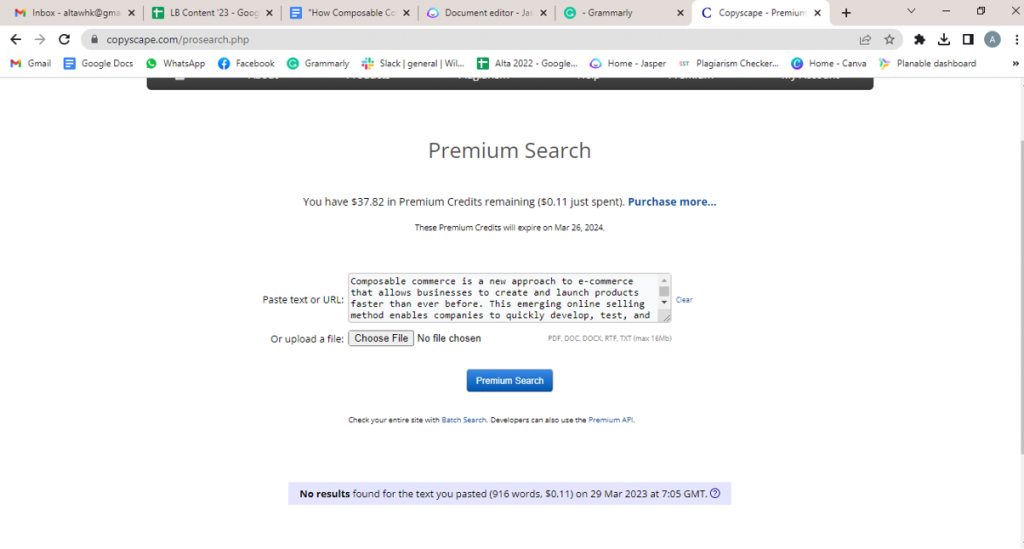Composable commerce is a new approach to e-commerce that allows businesses to create and launch products faster than ever before. This emerging online selling method enables companies to quickly develop, test, and deploy digital experiences tailored to their customers’ needs. By leveraging existing components with unique customizations, these organizations can get their products live quickly and efficiently.
The speed at which composable commerce reduces time-to-market for e-commerce businesses has led many entrepreneurs and established firms to embrace this model. With the ability to conduct rapid prototyping, adapt quickly to customer feedback, and instantly roll out newly developed features, businesses can bring ideas from the drawing board to market much more efficiently than traditional methods.
The advantages of composable commerce
The advantages of composable commerce go beyond faster time-to-market, however. By building solutions using existing components, businesses can reduce development costs significantly. Rather than developing a product from the ground up, companies can leverage existing infrastructure and services to rapidly create an active online presence without incurring additional expenses.
The modular nature of composable commerce also allows organizations to scale their operations as needed while remaining agile in their approach to development. By combining individual modules into more comprehensive solutions, businesses can adjust quickly to changes in customer demand and environmental conditions, enabling them to stay ahead of competitors by deploying new features more quickly.
In addition, composable commerce provides businesses the flexibility they need to create unique customer experiences and stay competitive. By combining existing components with customizations, organizations can easily differentiate themselves from their competitors while offering customers a personalized experience. This combination of customization and scalability has enabled businesses to rapidly build tailored solutions that meet the needs of their target audience.
What are the drawbacks of composable commerce?
Despite the numerous advantages composable commerce offers businesses faster time-to-market and reduced development costs, the model has some drawbacks. One of the main issues is that it can take time to predict which components will work best together to create a successful product. Because different vendors typically develop each module, achieving seamless integration between them can be challenging.
In addition, composable commerce often requires companies to maintain a deep understanding of how their modules interact, which can be highly complex in situations where multiple modules are combined into a single product, leading to significant challenges regarding debugging and troubleshooting. Moreover, if one component fails or has an issue, this can cause issues for the entire system.
Using existing frameworks and services may also limit organizations’ ability to innovate and differentiate themselves from competitors. Even though customizations can help create unique experiences, they may not be enough for some business models as customers often expect new features and functionalities that challenge existing norms. Furthermore, organizations have limited control over changes made by third-party vendors, making it difficult for them to stay ahead of the competition regarding innovation and user experience design.
Relying on external components increases the risk of data breaches due to vulnerabilities in third-party systems. It is essential for companies using composable commerce models to ensure they have robust security measures in place that cover both their internal infrastructure as well as any external components they rely on.
Using headless commerce in your e-commerce business
You can read more about headless commerce in this helpful guide. Headless commerce is an emerging trend in the e-commerce world that enables businesses to create unique customer experiences without sacrificing scalability or security. Headless commerce utilizes a system of decoupled back-end services to enable developers to quickly and flexibly create custom applications and websites. This approach allows companies to focus their development efforts on creating the best possible customer experience while relying on existing APIs and frameworks to handle background processes like payments and order management.
One of the primary benefits of using headless commerce is that it gives businesses a great deal of flexibility when designing their user experience. Companies can use a mix of existing third-party components and customizations to create applications tailored to their target audience, making it much easier for businesses to develop the features and functionalities they need to stay competitive.
In addition, headless commerce provides increased control over data management, making it easier for organizations to comply with privacy regulations such as GDPR. By decoupling back-end systems from front-end applications, companies can keep sensitive customer information separate from public-facing applications, reducing the risk of data breaches. Furthermore, this model helps companies minimize latency issues by allowing them to move data processing offsite, improving performance across all devices.
Headless commerce can also give developers greater control over performance monitoring and optimization, enabling them to quickly identify potential issues before they become significant problems, making it much easier for organizations to ensure that their online store remains fast and responsive at all times, which is crucial for providing customers with an enjoyable shopping experience.
Conclusion
Composable commerce is an increasingly popular approach among e-commerce businesses because it reduces time-to-market and provides a more efficient way to develop digital products. It allows companies to leverage existing components with unique customizations, allowing them to quickly launch new products without incurring additional development costs. Furthermore, composable commerce provides organizations the flexibility to create unique customer experiences and remain ahead of the competition by deploying new features quickly. By taking advantage of this approach, businesses can get their products to market faster and more efficiently than ever before.

- Building a DevOps Culture: Tips and Strategies - April 4, 2024
- Why Understanding DevOps Could Be Your Key To Success In The Music Industry - April 4, 2024
- Top Picks: The Best Laptops for Graphic Designers in 2024 - March 31, 2024

